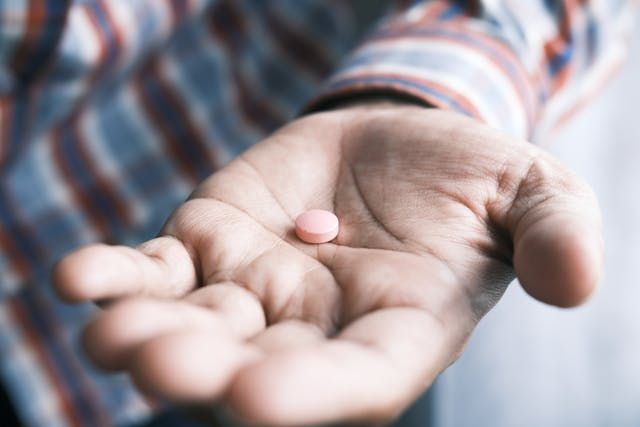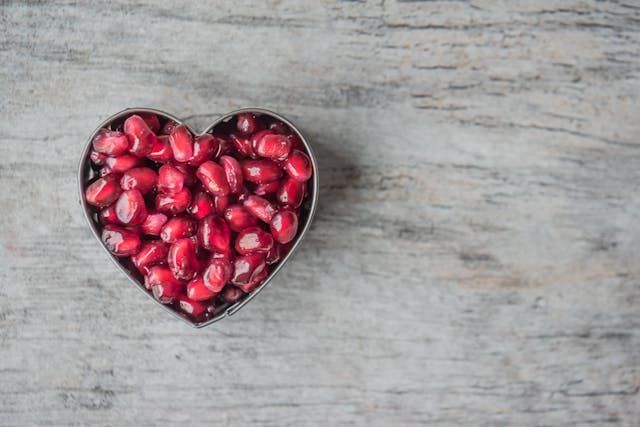🌟 Unlock Your Healthiest Holidays

Introduction
Warm Welcome to the Holiday Season
As the festive lights twinkle and the aroma of holiday delights fills the air, we extend a warm and joyous welcome to the holiday season. It's a time of togetherness, reflection, and shared moments that leave an indelible mark on our hearts.
Amidst the laughter and the tinkle of glasses, we also recognize the unique challenges this season can pose. The joy of celebration often comes hand-in-hand with the stress of expectations, the hustle and bustle of preparations, and the temptation of indulgences that might not align with our health goals.
In this holiday whirlwind, let's pause and set an intention. A commitment to celebrating in a way that nourishes both body and soul. This season, let's embark on a journey of mindfulness and health, finding a balance that allows us to revel in the festivities without compromising our well-being.
Understanding Alcohol Consumption
A. Defining Moderation: NIAAA Guidelines for Men and Women
Toasting to the holidays often involves clinking glasses, but how much is too much? Enter moderation, a key concept defined by the National Institute on Alcohol Abuse and Alcoholism (NIAAA). For women, this means up to one drink per day. As we explore this concept, it's essential to acknowledge the variations in tolerance influenced by both age and sex.
1. Variation in Tolerance Based on Age and Sex
Age and sex play pivotal roles in determining how our bodies respond to alcohol. The journey through life brings changes in metabolism and tolerance, making it crucial to adapt our approach to drinking based on our unique stages of life.
B. The Impact of Age on Alcohol Metabolism
1. How the Body Processes Alcohol Over Time
Our bodies, much like the seasons, transform. As we age, the metabolism of alcohol evolves, impacting how quickly or slowly we process it. Understanding this natural progression allows us to make informed choices that align with our body's changing needs.
2. Tips for Adjusting Alcohol Intake with Age
Age brings wisdom, and hopefully, some maturity, with that wisdom comes the opportunity to tailor your alcohol consumption. Whether it's adjusting the type of drinks we choose or being mindful of pacing, these tips can help us navigate the joyful art of celebration in a way that respects our evolving bodies.
C. Sex-Specific Considerations
1. Variations in Alcohol Tolerance Between Men and Women
Men and women, while united in celebration, exhibit differences in alcohol tolerance. Acknowledging these variations empowers us to make choices that suit our unique responses, fostering an atmosphere of inclusivity and health.
2. Hormonal Influences on Alcohol Sensitivity
Enter hormones, understanding how hormonal fluctuations influence alcohol sensitivity, particularly in women, adds another layer to the tapestry of informed choices during festive moments.
During a woman's cycle, she is most sensitive to alcohol effects, she is most sensitive to alcohol effects. This means that if she drinks more than usual during this time of the month, it may take less alcohol for her to feel drunk or impaired.
Estrogen has been shown to increase the activity of feel-good GABA neurotransmitter receptors, which slows down nerve cell activity and disrupts the nerve cell's ability to communicate with each other. This can lead to accentuated feelings of relaxation and euphoria, as well as impaired judgment and coordination.
While her body is producing more estrogen, this slows down the liver's ability to break down alcohol, leading to higher blood alcohol levels and more severe hangovers.
During menopause, a woman consuming two to five drinks a day has 7x the rates of depression as a man driking the same amount.
Alcohol Metabolism
A. The Role of Digestion in Processing Alcohol
Our journey with alcohol begins the moment we take that celebratory sip. As the drink trickles down, it interacts with our digestive system. Upon entering the stomach, a small portion of alcohol is rapidly absorbed through the stomach lining, making its way into the bloodstream quickly. However, the real adventure unfolds in the small intestine.
In the small intestine, where the majority of nutrient absorption occurs, alcohol finds its way through the intestinal walls and into the bloodstream. From here it's a swift journey to the liver, the body's metabolic powerhouse.
The liver plays a central role in processing and metabolizing alcohol. Rather than simply filtering out alcohol, the liver actively works to transform it into less harmful substances.
So, in essence, the liver doesn't merely filter out alcohol but actively works to change its form through a series of enzymatic reactions to make it less toxic and more easily eliminated by the body. This process is crucial for preventing the harmful effects of excessive alcohol in the bloodstream.
B. Eating Smart: How Food Choices Affect Alcohol Absorption
1. Tips for Pre-Drinking Meals
Imagine your stomach as the first line of defense against the effects of alcohol. Eating a well-balanced meal before indulging can be likened to providing your digestive system with reinforcements. The presence of food in the stomach slows down the absorption of alcohol, offering a gradual release into the bloodstream. This, in turn, prevents the rapid spikes in blood alcohol concentration that can lead to unwelcome side effects.
2. Variation in Dietary Needs Based on Age and Sex
As we age, not only do our dietary needs evolve, but so does the way our bodies process alcohol. Nutrient-rich meals become essential, offering not just a culinary delight but also a strategic approach to moderating alcohol absorption.
Caffeine and Alcohol:
A. Exploring the Mix of Caffeine and Alcohol
The combination of caffeine and alcohol creates a crazy dance of contrasting effects on our bodies. From the buzz of caffeine to the relaxation induced by alcohol, these interactions can be profound.
B. Understanding the Impact on Alertness and Intoxication
Caffeine, the morning energizer, meets alcohol, the evening relaxant – a pairing that can influence our alertness and level of intoxication. Navigating this balance requires a nuanced understanding of how these substances interact, ensuring that our celebrations remain vibrant yet controlled.
C. Considerations for Age-Related Caffeine Sensitivity
1. How Caffeine Affects Different Age Groups
Just as our taste buds evolve with age, so does our sensitivity to caffeine. Exploring how caffeine affects different age groups allows us to fine-tune our choices, ensuring that our celebrations align with the changing needs of our bodies.
D. Sex-Specific Responses to Caffeine-Alcohol Combinations
Men and women, each unique in their biological makeup, exhibit distinct responses to the combination of caffeine and alcohol.
E. Dangers of Mixing Energy Drinks and Alcohol
The stimulants in energy drinks can mask the depressant effects of the alcohol. The consequences of this can be devastating and can include drinking more than anticipated and/or more than can be safely consumed because the normal onset of sleepiness is delayed, while the euphoria and exuberance "to party" will push further consumption.
Alcohol Absorption Journey: Stomach, Liver, and Beyond
A. The Pathway of Alcohol Absorption Through the Stomach Lining
The clock strikes midnight, and you raise your glass in a toast, and the journey of that sip begins. As you take that celebratory drink, a fraction of the alcohol swiftly starts its absorption journey right through the stomach lining. It's a direct path to the bloodstream, setting the stage for the intoxicating adventure that unfolds.
B. Age-Related Changes in Stomach Acid Production
With age comes wisdom, but also subtle shifts in our physiology. One such change occurs in the production of stomach acid, a key player in the alcohol absorption game. As we age, the stomach may produce less acid, influencing the rate at which alcohol is absorbed. Understanding this age-related nuance allows us to navigate our celebratory moments with a touch of wisdom.
It's important to note that while lower stomach acid levels may decrease alcohol absorption, individual responses can vary. Factors such as age, health conditions, and medication use can influence stomach acid levels and, subsequently, the absorption of alcohol. Additionally, the impact of stomach acid on alcohol absorption is just one aspect of the overall process, with the liver playing a significant role in alcohol metabolism and elimination.
C. Sex-Specific Factors Influencing Alcohol Metabolism
1. Hormonal Influences on Liver Function
For both men and women, hormones hold sway over liver function. Hormonal fluctuations, particularly in women, can influence how the liver processes alcohol. It's a delicate balance where low testosterone and higher estrogen levels may enhance certain aspects of alcohol metabolism.
2. Impact on Alcohol Breakdown Rates
The pace at which our bodies process and eliminate alcohol can vary between men and women. This divergence adds an extra layer of nuance to our understanding of how hormones shape the intricate dance between alcohol and our physiological systems.
Red Wine and Headaches: Unraveling the Mystery
A. Tannins, Histamines, and Other Compounds in Red Wine
As you savor your glass of cabernet, pinot noir, or other red wine, there's more to the experience than meets the eye—or, in this case, the palate. Tannins, histamines, flavanols and recently the antioxidant quercetin have come into play, as the myriad of compounds contribute to the complexity of flavors. However, for some, this symphony may play a dissonant note, leading to the enigma of red wine headaches. Let's delve into the components that make red wine a sensory delight and explore why they might, for a few, accompany an unwelcome side effect.
B. Age-Related Sensitivities to Wine Components
As we journey through life, our bodies, much like a well-matured vintage, change. Red wine, known for its bold character, can sometimes trigger headaches, particularly in those through mid-life due to age-related sensitivities. Understanding how the components of red wine interact with your body unveils insights into the delicate balance of indulgence and well-being.
C. Sex-Specific Experiences with Red Wine Headaches
1. Hormonal Influences on Sensitivity
How about your hormones, shaping your red wine experience? For women, hormonal fluctuations may amplify sensitivity to certain components in red wine, contributing to the puzzle of headaches. It's a nuanced interplay where the ebb and flow of hormones may influence how the body responds to this timeless libation.
2. Unique Responses to Red Wine
Men and women, each with their distinctive biology, may react differently and at different times with red wine. The experience of headaches after indulging in red wine can vary, highlighting the importance of understanding and respecting individual responses to this complex elixir.
The Sleep Connection: Alcohol's Influence on Zzz's
A. The Initial Sedative Effect of Alcohol
As the day winds down and the pull of a nightcap beckons, it's essential to understand the initial seductive embrace alcohol offers at the end of your day when you are most stressed. The calming effect, the gentle tug toward relaxation, is the first act of alcohol's influence on your precious hours of rest. But a good night's sleep after a drink or two doesn't always end with a restful night's sleep.
B. Age-Related Variations in Sleep Patterns and Alcohol's Impact
Sleep patterns change as we age, often related to sleep hormones and neurotransmitters. The impact of alcohol can add challenges to these hormones each passing year. Age-related variations in sleep patterns reveal how alcohol can be a sedative seduction to a good night's sleep but can also clash with the natural rhythms of sleep.
C. Sex-Specific Considerations for Sleep Disruption
1. Hormonal Influences on Sleep Quality
For women, hormonal fluctuations can influence the quality of their sleep, and the introduction of alcohol adds another layer of potential disruption. Understanding the interplay between hormones and sleep quality provides insights into how alcohol may become a supporting or an unwanted disruptor in your sleep cycle.
Beyond the Sip: Navigating a Safe Night Out
Common belief suggests that consuming one standard drink per hour keeps your Blood Alcohol Concentration (BAC) within safe limits. According to the National Institute on Alcohol Abuse and Alcoholism (NIAAA), a standard drink is defined as half an ounce of alcohol. For reference, this translates to one 12-ounce beer, a five-ounce glass of wine, or a 1.5-ounce shot of distilled spirits, each considered a standard drink.
However, we are aware that conventional wisdom can sometimes be misleading, and its accuracy varies. The truth is, that the effects of alcohol can begin with the very first sip. It's crucial to emphasize that no amount of alcohol should lead to drinking and driving. Impairment and legal consequences can occur even if your BAC is below the commonly recognized limit of 0.08%.
Conclusion
Encouragement for a Mindful and Health-Focused Holiday Season
As your holiday season continues to unfold, let this be a gentle reminder to approach the festivities with mindfulness and a focus on health. Each sip, each choice, is an opportunity to celebrate not only the joy of the moment but the vitality of your well-being. Embrace the richness of the season while keeping a compassionate eye on the unique needs of your body.











